Last Updated on October 7, 2025 by shawnshealth
Discover how calisthenics and bodyweight training can develop functional strength, focusing on military, police, survival, and general fitness needs.
Introduction to Functional Strength Through Calisthenics
When it comes to functional strength, calisthenics (or bodyweight training) reigns supreme. Unlike traditional weightlifting that isolates specific muscles, calisthenics exercises train the body as a whole, mimicking real-life movements that require multiple muscle groups working in unison. Whether you’re in the military, law enforcement, a survivalist, or simply looking to improve your general fitness, bodyweight training offers a highly effective path to building strength that translates into practical, everyday applications.
In this article, we will explore how calisthenics can build functional strength, focusing on its benefits for military personnel, police officers, survivalists, and general fitness enthusiasts. We’ll also cover how bodyweight exercises contribute to endurance, mobility, and injury prevention—all critical elements of functional fitness.
🌾 Want to build rugged, real-world strength that actually shows up when it counts? Don’t miss the full blueprint in our Unlock Farmer Strength guide. It breaks down the principles, gear, and training strategies behind the kind of power that moves hay bales, hauls gear, and handles life’s toughest tasks-whether you’re training in a barn, a gym, or your own backyard.
What Is Functional Strength in Calisthenics?
- Functional strength means the ability to perform everyday movements efficiently.
- Calisthenics builds this by using natural bodyweight exercises.
- It improves balance, coordination, and real-world power.
How Does Calisthenics Build Functional Strength?
- Engages multiple muscle groups simultaneously.
- Focuses on core stability and joint mobility.
- Uses compound movements like push-ups, pull-ups, and squats.
Why Choose Calisthenics Over Traditional Weightlifting?
- No equipment needed—train anywhere, anytime.
- Enhances body control and flexibility alongside strength.
- Reduces injury risk by promoting natural movement patterns.
Can Beginners Build Functional Strength with Calisthenics?
- Absolutely—starting with basic moves like wall push-ups and assisted squats.
- Progression is gradual, increasing reps or difficulty over time.
- Consistency and proper form are key for steady improvement.
🧠 Want to stay strong and independent for life? Discover 7 senior-friendly strength strategies that build real-world power and confidence—read the full guide.
🛒 Looking for gear that fits your training style? Browse curated Amazon pages for portable calisthenics and home fitness equipment to support real-world strength.
⚠️ As an Amazon Associate, I earn from qualifying purchases.
Table of Contents
⚠️ This content is for informational purposes only and is not medical advice. Always consult a healthcare professional before starting any new fitness routine.
🛒 This site contains affiliate links. As an Amazon Associate, I earn from qualifying purchases—at no extra cost to you.
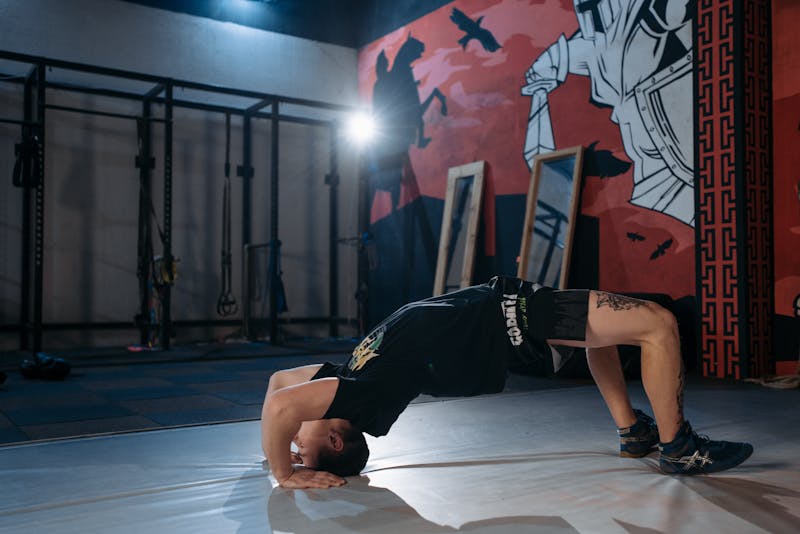
My Story on Calisthenics and Functional Strength
I started out doing pushups beside my bed every night after school, did pullups in our garage, and stayed active as every highschooler did back then. After college there was a time when I focused on lifting weights. I did lots of bench presses, triceps extensions, curls, etc. and developed a massive chest and muscular physique!
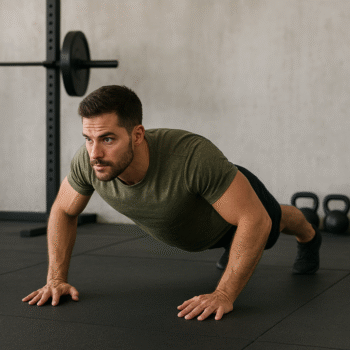
Over time, I realized all that muscle mostly helped me lift heavier in the gym—and not much else. It didn’t make me better at pushing a car out of a snowbank, climbing trees with my kids, or moving with speed and agility. Even as a former kickboxer, it didn’t help me fight. Honestly, it was more about looking strong and trying to impress other guys (which probably didn’t work anyway).
Once I started traveling more, it hit me—I was completely chained to the gym. Every stop meant hunting down a new one, paying a fee, figuring out the layout, waiting my turn, and hoping I could squeeze in a halfway decent workout.
Eventually, I shifted to calisthenics. I’m not as bulky as I used to be, but I’m way more agile, stronger relative to my bodyweight, and honestly happier with how I move and feel. This body can climb ropes, scale walls, and explode through presses—and it’s built for real life. Calisthenics just fits. It’s a functional, sustainable way to train and live.
I’m not knocking weightlifting—it has its place. But if you’re after functional strength and a lean, agile body that actually performs, calisthenics can get you there. It’s all I need. I could use weights, sure, but I get so much out of bodyweight training that I always have a solid plan, and I can do it anywhere with great results.
Happy Training!
🔥Ready to shed fat and build real-world strength—without a gym? Discover how bodyweight training can help you lose weight, boost mobility, and stay independent at any age. Read the full guide on functional calisthenics.

🛒 Quick Tip: Looking for fitness gear? Browse top-rated calisthenics equipment on Amazon to power up your workouts fast 💪
As an Amazon Associate, I earn from qualifying purchases. This means I may receive a commission if you purchase through links on this site, at no extra cost to you.
The information in this article is for general informational purposes only and is not intended as medical advice. Please consult with a healthcare professional before starting any new fitness routine or making changes to your health regimen.
Review this short video by Al Kavadlo on functional strength and calisthenics!
What is Functional Strength
Functional strength is the ability to perform everyday movements effectively, safely, and efficiently. These movements are often compound exercises that engage multiple muscle groups and challenge coordination, balance, and agility. Whether it’s carrying groceries, climbing a ladder, running, or tackling physical challenges at work, functional strength allows you to perform tasks with ease.
Unlike bodybuilding or powerlifting, which typically focus on maximizing size or strength in isolated muscles, functional strength revolves around movements that mimic real-world tasks. Calisthenics, with its emphasis on bodyweight exercises, fits perfectly into this category. Through exercises like push-ups, squats, pull-ups, and planks, calisthenics promotes movements that are directly applicable to daily life and high-performance situations.
🧠Train smart, move better. Learn how calisthenics builds strength you can actually use—explore the full guide.

The Role of Calisthenics in Military Training
Military personnel are required to maintain a high level of functional strength to succeed in physically demanding environments. Whether it’s carrying heavy gear, sprinting, running long distances, or handling combat situations, strength and endurance are paramount. Calisthenics is integral to military fitness regimens because of its effectiveness in building endurance, mobility, and mental toughness.
- Endurance: Exercises like burpees, mountain climbers, and push-ups help build the stamina needed to endure long operations, carrying gear, or performing physical tasks for extended periods.
- Core Strength: A strong core is essential for maintaining balance and stability in combat or tactical environments. Exercises like planks, leg raises, and mountain climbers strengthen the core muscles, improving posture, balance, and coordination under pressure.
- Explosive Power: In military training, soldiers often need to react quickly to changing situations, whether sprinting, jumping, or lifting. Explosive exercises such as jump squats and plyometric push-ups enhance power, agility, and speed.
- Joint and Ligament Strength: Since calisthenics focuses on functional movement patterns, it strengthens the joints and ligaments. This is crucial for soldiers who need joint stability during high-impact tasks, such as running or crawling in the field.
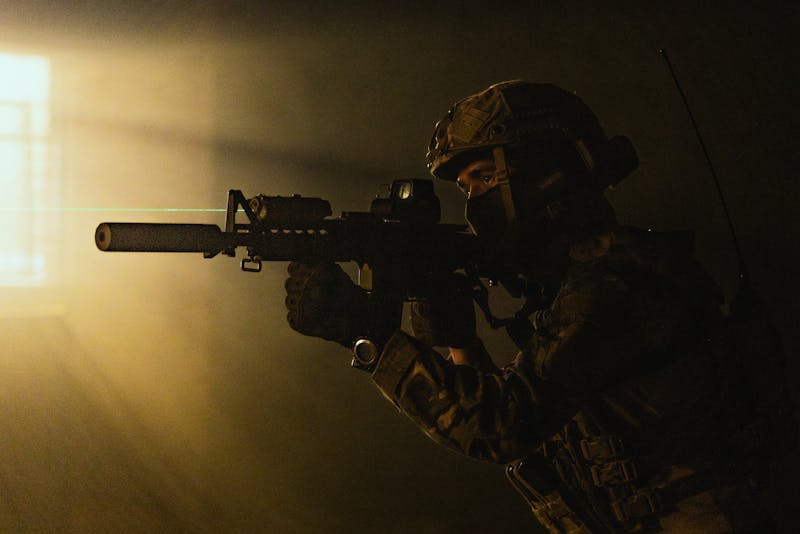
Calisthenics for Law Enforcement
Law enforcement officers are tasked with maintaining public safety in high-pressure situations. Their ability to quickly apprehend suspects, carry out physical confrontations, or pursue criminals on foot is heavily reliant on functional strength. Calisthenics provides an efficient way for police officers to improve their performance in these areas.
- Upper Body Strength: Pull-ups, push-ups, and dips are staples in any police training regimen. These exercises improve the upper body strength necessary for subduing suspects or climbing obstacles in pursuit.
- Lower Body Strength: Running, chasing, and sometimes even carrying individuals require powerful legs. Bodyweight exercises like squats, lunges, and calf raises help develop leg strength that can improve running speed and endurance during chases.
- Flexibility and Mobility: Police officers must be able to move quickly to change directions, jump over barriers, and adjust their body positions. Mobility drills such as deep squats, lunges, and yoga-inspired stretches can help improve flexibility, ensuring that officers can move efficiently and reduce the risk of injury during intense physical activity.
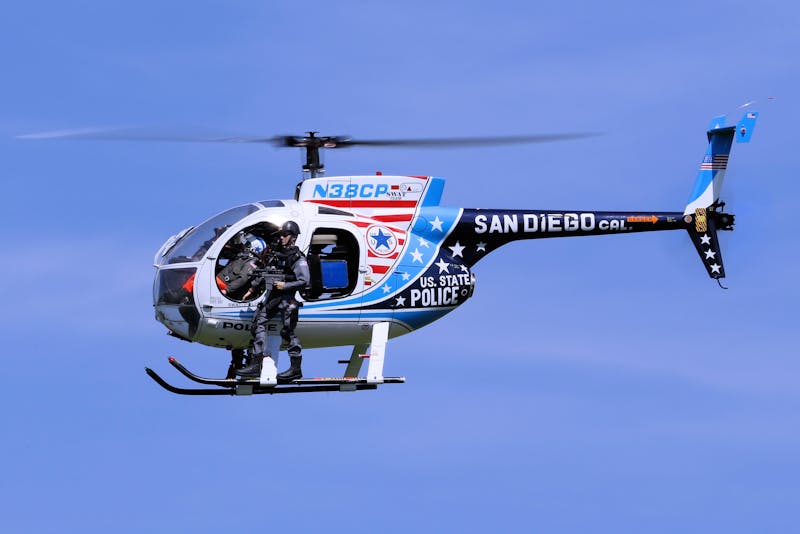
Calisthenics for Survival Training
For survivalists, functional strength is a key factor in ensuring that they are capable of handling extreme environments and situations. Whether it’s building a shelter, hunting for food, or navigating difficult terrain, survivalists need strength and endurance that can be applied directly to survival tasks. Bodyweight training plays an essential role in developing these abilities.
- Carrying Heavy Loads: Functional movements like squats, lunges, and carries (such as farmer’s walks) mimic the real-world task of carrying supplies or materials across rugged terrain. These exercises condition the body to endure while carrying weight, which is often a survival necessity.
- Climbing and Navigating Terrain: Surviving in the wild often requires climbing trees, rocks, or mountains. Pull-ups, chin-ups, and various types of climbing drills help build the upper body and grip strength necessary for these tasks.
- Full-Body Conditioning: Survival situations rarely focus on one isolated movement or muscle. A survivalist’s workout needs to be versatile. Calisthenics exercises like burpees, push-ups, and planks engage multiple muscle groups at once, mimicking the full-body action required in survival scenarios.
🌾 Want strength that shows up in the real world? Learn how to build rugged, practical muscle with these 7 farmer-strength strategies—read the full guide.
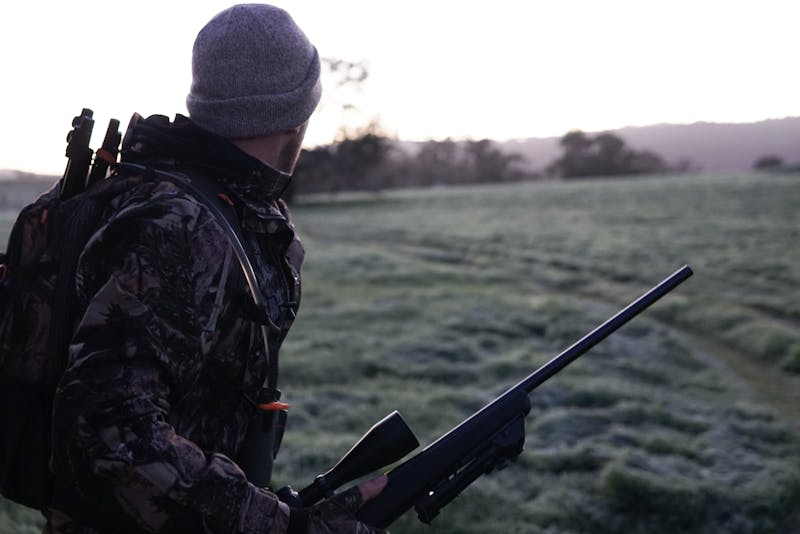
General Functional Fitness: Why it Matters for Everyone
Regardless of your profession, having functional strength is essential for a healthy, active lifestyle. Whether you’re lifting groceries, gardening, or just playing with your kids, you rely on functional strength every day. Calisthenics provides an efficient, scalable method to build the foundation for all kinds of physical activities.
- Mobility: As you age, maintaining joint mobility becomes critical. Bodyweight exercises like yoga poses, dynamic stretches, and controlled squats promote mobility and flexibility, which can prevent stiffness and injuries.
- Balance and Coordination: Functional exercises challenge your balance and coordination, which are essential for performing daily tasks like walking on uneven surfaces or balancing when lifting objects. Planks, lunges, and squats improve these skills.
- Injury Prevention: Since bodyweight exercises mimic natural movement patterns, they help strengthen tendons, ligaments, and muscles that are typically overlooked in traditional weight training. By training the body to move in a more natural way, calisthenics helps prevent injuries.
🛠️ Tough times call for smart movement. Discover 7 functional fitness exercises that build strength, resilience, and real-world capability—read the full article.
Key Calisthenics Exercises for Functional Strength
Here’s a breakdown of some essential calisthenics exercises that help build functional strength:
- Push-ups: Great for building upper body strength, especially for the chest, triceps, and shoulders.
- Pull-ups/Chin-ups: Fantastic for upper body pulling strength, grip strength, and endurance.
- Squats: An essential lower body exercise that works the quads, hamstrings, glutes, and core.
- Lunges: Improve lower body strength, stability, and flexibility.
- Planks: Excellent for strengthening the core, which is crucial for overall stability and injury prevention.
- Burpees: A full-body exercise that combines strength, endurance, and explosive power.
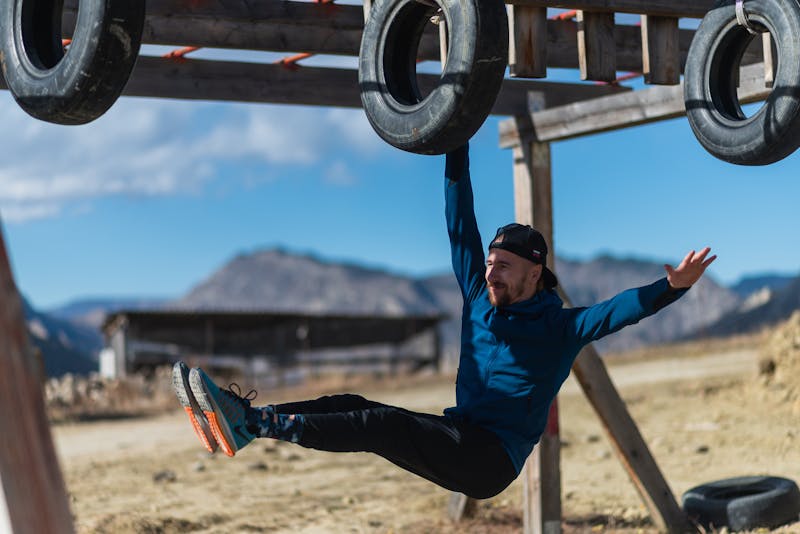
💪 Quick Start Calisthenics Routine
If you’re just getting started or want a no-equipment workout that builds real-world strength, try this:
- Push-ups – 3 sets of 10
- Bodyweight Squats – 3 sets of 15
- Planks – 3 x 30 seconds
- Lunges – 2 sets of 10 per leg
- Pull-ups or Rows – 2 sets to failure (use a bar, rings, or sturdy surface)
🧠 Tip: Focus on form, not speed. Progress by adding reps or increasing time under tension.
❌ Common Calisthenics Mistakes (and How to Fix Them)
Even simple bodyweight training can go sideways if you’re not careful. Here are a few common slip-ups to watch for:
- Skipping Form Checks Rushing through reps leads to poor mechanics and joint strain. Slow down and lock in your form first.
- Ignoring Mobility Strength without mobility is a trap. Add dynamic stretches and deep squats to stay limber and injury-free.
- Overtraining Without Recovery More isn’t always better. Your body needs rest to rebuild—especially with high-volume routines.
- Neglecting Progression Doing the same push-ups forever won’t cut it. Increase reps, change angles, or add tempo to keep growing.
- Training in Isolation Calisthenics works best when it mimics real movement. Mix in compound exercises that challenge your whole body.
📚 Related Reads
Want to go deeper into functional strength and bodyweight training? These guides expand on the principles covered here:
- 🧠 Senior Fitness: 15 Essential Principles Build strength, mobility, and confidence at any age with smart, scalable training.
- 💪 The Ultimate Guide to Calisthenics Everything you need to know about bodyweight training—from beginner tips to advanced progressions.
- 🔍 What Is Strength: 6 Essential Elements Explore the core components of true strength—beyond just muscle size or gym numbers.
Conclusion
Whether you’re preparing for a physically demanding job or just aiming to improve your overall health, calisthenics offers a powerful tool for developing functional strength. By incorporating bodyweight exercises into your routine, you can enhance mobility, endurance, and stability—qualities that are essential in military, police, survival, and everyday life.
The beauty of calisthenics is its versatility. You don’t need a gym or expensive equipment to get started—just your body and the will to push yourself. The functional strength gained from consistent calisthenics training can unlock your true physical potential, preparing you for anything life throws your way.
🔥 Gear to Help You Achieve Your Health and Fitness Goals 💪
If you’re looking for tools to enhance your fitness journey, check out this. Explore top-rated fitness gear on Amazon to enhance your workouts. Check out the latest picks here! 🛒 to support your workouts and progress.
🚀 Find equipment designed to boost strength, endurance, and overall performance!
⚠️ Short disclaimer: As an Amazon Associate, I earn from qualifying purchases.
People Also Ask: Functional Strength Through Calisthenics
What makes calisthenics functional?
- Uses real-world movement patterns
- Engages multiple joints and muscles
- Enhances coordination and control
Can calisthenics replace gym workouts?
- Builds strength without machines
- Supports full-body development
- Increases mobility and balance
Is calisthenics good for beginners?
- Starts with simple bodyweight moves
- Scales to any fitness level
- Builds foundational strength safely
How does calisthenics support injury prevention?
- Strengthens stabilizer muscles
- Improves joint integrity
- Promotes balanced muscle development
Why is core strength important in calisthenics?
- Supports full-body movements
- Enhances posture and stability
- Prevents lower back strain
How often should I train calisthenics for functional strength?
- 3–5 times per week recommended
- Focus on consistency over intensity
- Include rest and active recovery
My grace is all you need for My power is the greatest when you are weak. – 2 Corinthians 12:9




